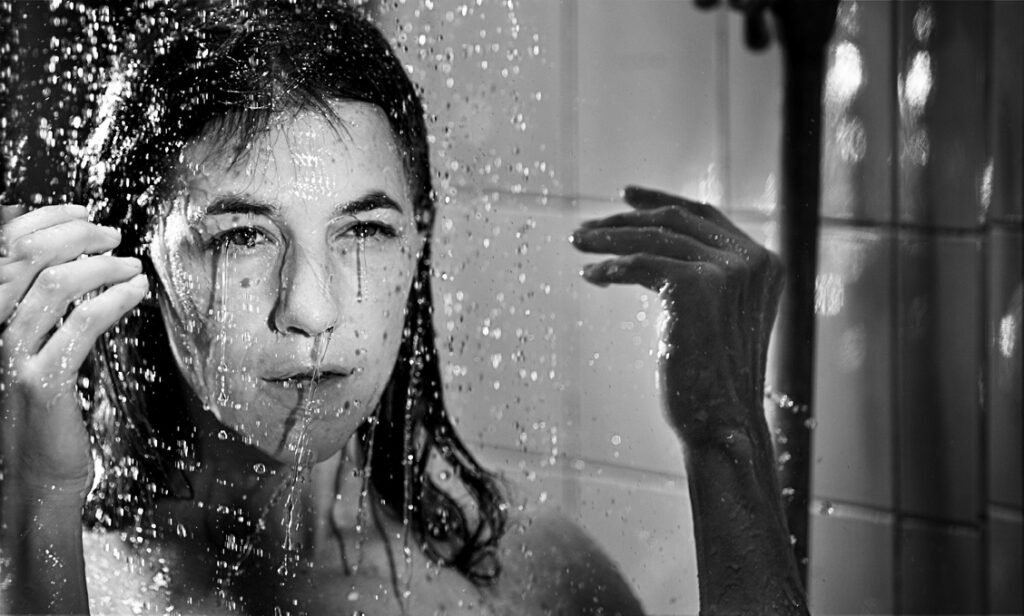
It’s been quite some time since I’ve seen Lars Von Trier’s Antichrist, and when I decided to re-watch it, I realized all I could remember about it were a few…key scenes. The film has become rather notorious as one of those “let’s show this to our friends and see if they can handle the violence” movies. Normally, I’d say that’s a bit sad, because it has so much more to offer. Instead, the notoriety of its violence has opened up many a gore-hound to the trippy art-house legacy of Von Trier. I’m not saying it’s particularly well-received by that crowd, but at least that exposure is there.
For those who care, there will be spoilers.
Antichrist begins with a slo-mo intro, set to soothing music. Charlotte Gainsbourg and Willem Dafoe play two unnamed characters. One evening, they’re making violent, passionate love, and fail to notice that their young son has escaped his crib and fallen out of a window to his death. Gainsbourg is filled with guilt over the incident, and in an attempt to help his wife cope, Dafoe takes on the role of therapist. This is his profession, and while Gainsbourg is dubious about husband-to-wife therapy, she accepts his help.
Dafoe is a therapist that strongly believes in exposure therapy, so he confronts his wife with the question: “What place would make you most uncomfortable?” She tells him that the forest is the place that scares her the most, so they head to an isolated cabin in the woods for some intense one-on-one therapy sessions.
Dafoe spends the second act of the film mansplaining Gainsbourg’s emotions, something she doesn’t exactly react well to. In her grief, she becomes insatiably horny, and forcefully ravages Dafoe every chance she gets. If we are to take away anything from this film, it’s that losing a child makes you extremely horny. Who would have thought?
Gainsbourg gets thoroughly fed up with Dafoe’s arrogantly-presumptuous methods, and reluctance to fuck. She continually lashes out at him. In her guilt, she becomes thoroughly convinced that she is evil. She flees from Dafoe over and over again, and in his search for her, he comes across a foxhole with a self-disembowling fox inside. It turns to him and simply says, “Chaos reigns.”
The chase reaches its climax (hehe) when Gainsbourg takes a large wooden block and smashes Dafoe’s testicles. She manually stimulates him until he ejaculates blood, and then cuts a hole in his leg where she places a heavy weight, to ensure that he can’t escape. We then discover that Gainsbourg had “intentionally” crippled their child over the years by putting his shoes on the opposite feet, causing them to grow abnormally, and ultimately producing the defect that caused him to fall to his death. In her grief, she cuts off her clitoris with a pair of dull scissors. She has finally proven her thesis that “women are evil.”
This is an example of what makes Lars Von Trier’s later works so intriguing. If you take the “moral of the story” at face value, he seems to literally be saying that women are evil. At the same time, it’s easy to see this as a moral that’s only supposed to be applied to this particular story. This trend can also be verified in his films Dogville and Manderlay, both of which end with a montage that illustrate how evil Americans are. Von Trier tends to come across as mean-spirited in general, especially when you consider that his film Melancholia was thrown out of Cannes because of remarks he made that were rather sympathetic to Hitler. He may be a dick, but quite frankly I don’t care, because he’s a fascinating dick and a damn good filmmaker.
The plot synopsis I’ve given doesn’t really touch on the symbolism of Antichrist, and that’s intentional. By far the most interesting part of the experience is trying to put together the pieces of the puzzle, and figuring out for yourself just what the hell is going on in this movie. For that reason, I refuse to go into further detail.
8/10